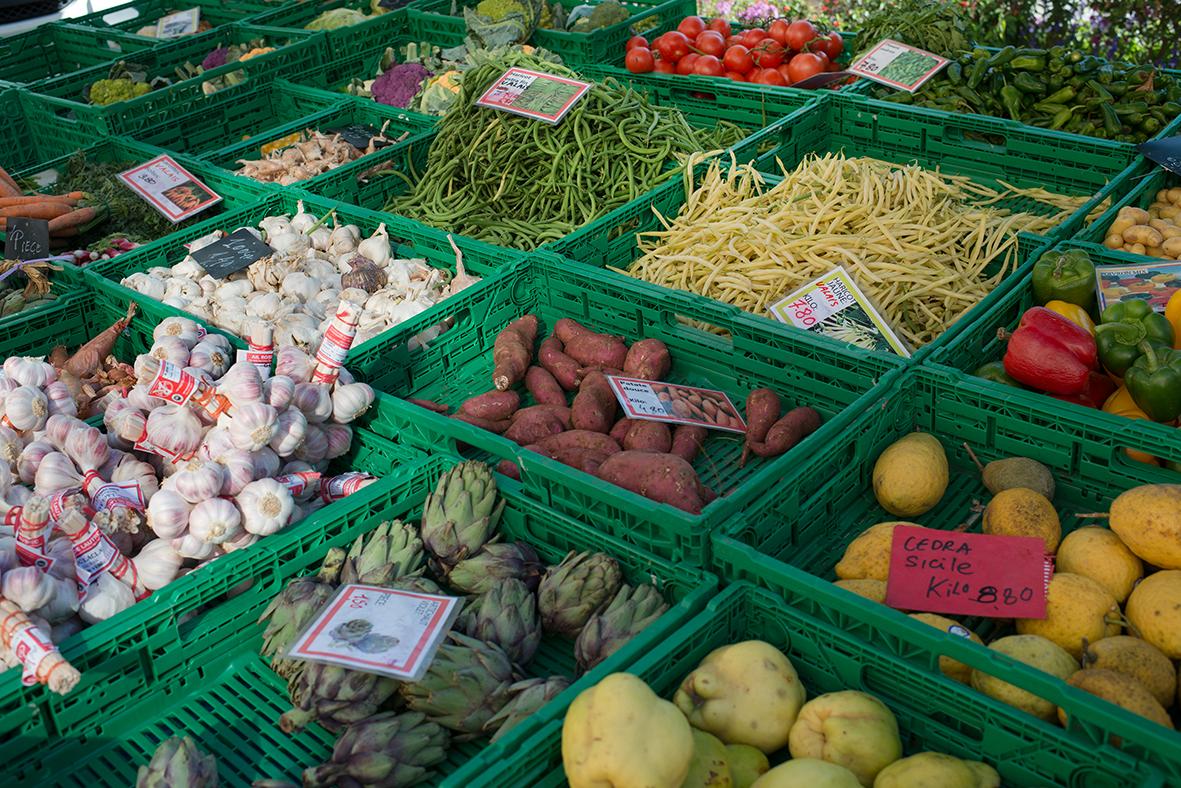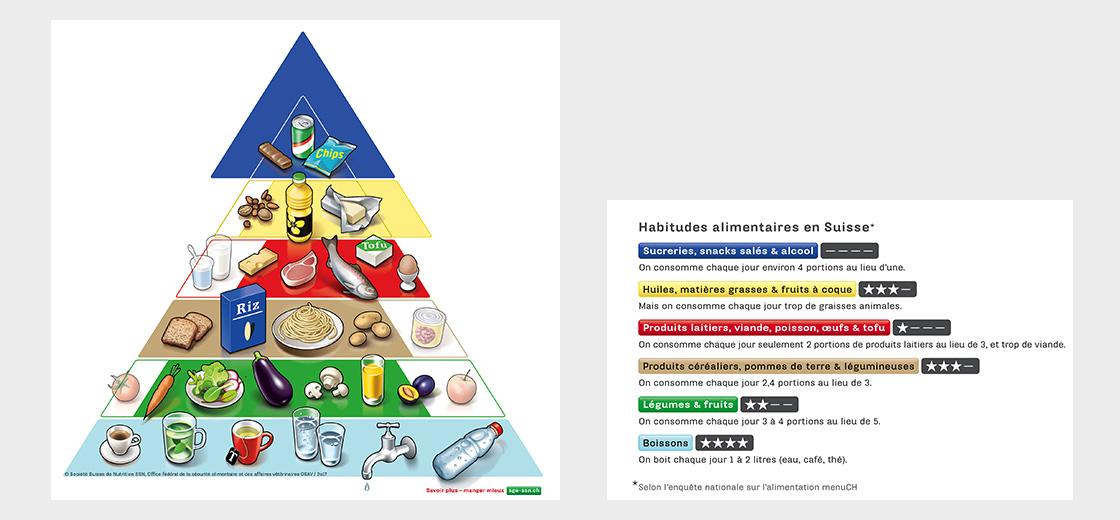The Swiss are familiar with the food pyramid, but don’t comply with it

The results of the national “menuCH” survey show that the food consumed by the Swiss population equates to an inverted food pyramid.

In March 2017, the national nutrition survey “menuCH” published the first representative findings on food consumption and eating habits in Switzerland. The results show that the food consumed by the Swiss population equates to an inverted food pyramid.
Compared with nutritional recommendations, the Swiss eat too little fruit, vegetables, pulses and dairy products, on average. On the other hand, they consume too much meat and too many sweet and savoury snacks. Angéline Chatelan from the Institute of Social and Preventive Medicine at the University of Lausanne is a member of the research group that carried out the menuCH study. She reports on the challenges faced by this national survey.
The menuCH survey provides the first ever representative data on Swiss eating habits. Is Switzerland lagging behind when it comes to knowing what its population eats?
Angéline Chatelan: Clearly. By 2014, nearly all the European countries had carried out at least one national nutrition study. Some data did exist in Switzerland before menuCH, but it was incomplete. Cohort studies reflected regional trends. However, their methods were not always comparable and/or nutrition was not always the main subject of the study. What is special about the menuCH study is that it respects European criteria thanks to the standardised methods it uses for obtaining information on food consumption. It was also the first time that a sample which is representative of Switzerland is questioned individually and in detail about its eating habits.
Just like menuCH, the NRP 69 seeks to build bridges between nutrition and health. How can the menuCH survey help the programme’s researchers?
The menuCH study collected lots of data. Some of this was on food storage methods, packaging, seasonal products, etc. This data has not yet been evaluated and will soon be available from the Federal Food Safety and Veterinary Office. It could be helpful to combine such data with some NRP 69 projects.
In view of the survey results, how can we motivate the Swiss population to eat more healthily?
Around three in every four people in Switzerland are familiar with the food pyramid. Therefore, we shouldn’t focus exclusively on measures aimed at raising nutritional knowledge. However, we could usefully address product availability and access. Switzerland subsidises the production of meat and dairy products. Contributions could also be directed towards plant-based agricultural products, thereby reducing the price of fruit and vegetables, for example. Alternatively, we could tax less healthy products such as soft drinks, or ban their sale in schools. Another solution might be to work with the food industry to gradually reduce the amount of salt, sugar and other additives in processed products. Or we could offer courses to schoolchildren from an early age, covering nutrition, cooking and dealing with food in general.
